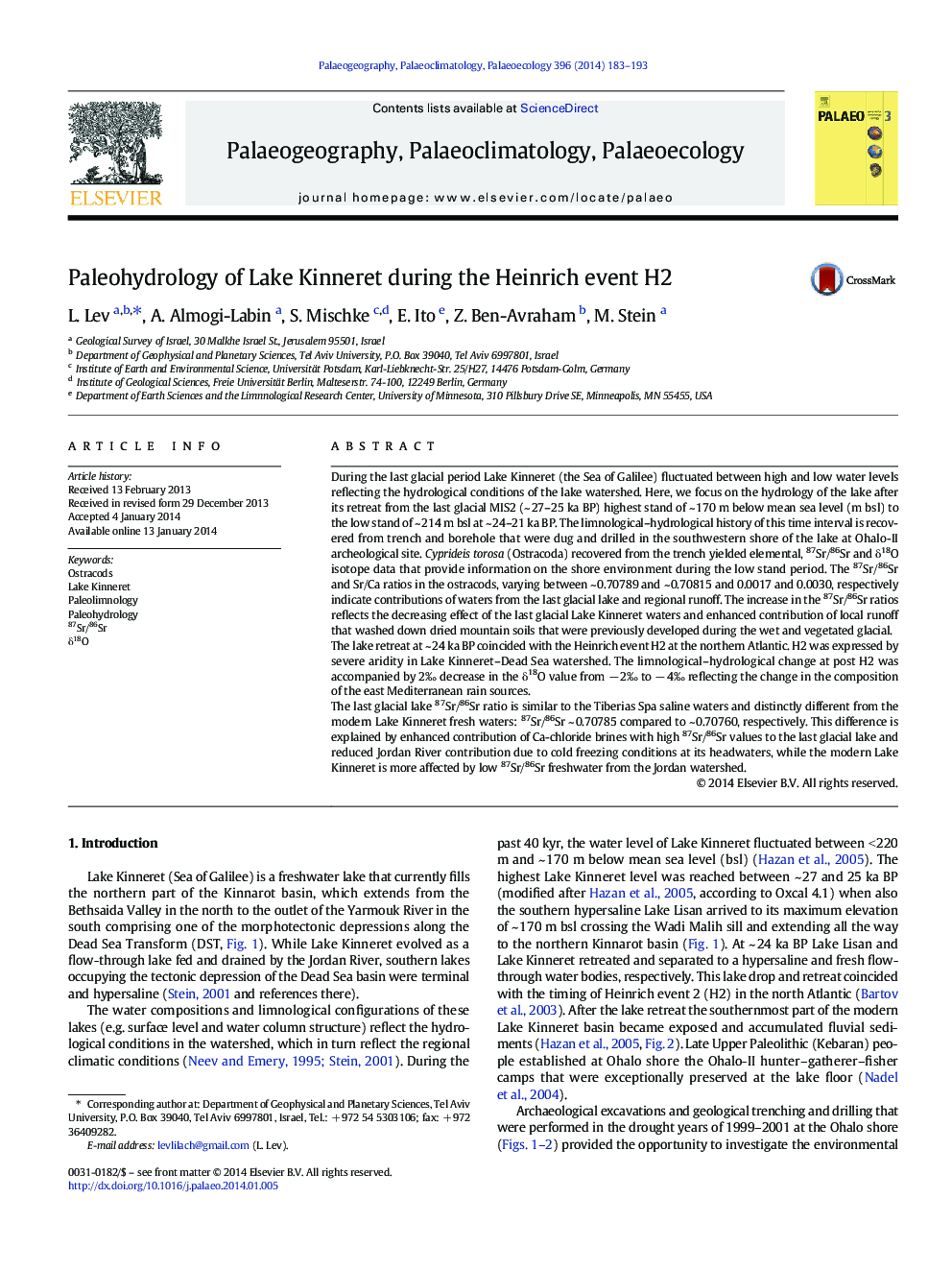| کد مقاله | کد نشریه | سال انتشار | مقاله انگلیسی | نسخه تمام متن |
|---|---|---|---|---|
| 4466415 | 1622194 | 2014 | 11 صفحه PDF | دانلود رایگان |

• Ostracods are good monitors of limnological–hydrological conditions of Lake Kinneret.
• Lake retreat coincided with H2 cold event that imposed arid conditions in the region.
• 87Sr/86Sr and Sr/Ca indicate changing contributions of glacial lake and runoff water.
• The last glacial lake was strongly affected by Ca-chloride brine.
• δ18O in the ostracods reflects regional rains compositions.
During the last glacial period Lake Kinneret (the Sea of Galilee) fluctuated between high and low water levels reflecting the hydrological conditions of the lake watershed. Here, we focus on the hydrology of the lake after its retreat from the last glacial MIS2 (~ 27–25 ka BP) highest stand of ~ 170 m below mean sea level (m bsl) to the low stand of ~ 214 m bsl at ~ 24–21 ka BP. The limnological–hydrological history of this time interval is recovered from trench and borehole that were dug and drilled in the southwestern shore of the lake at Ohalo-II archeological site. Cyprideis torosa (Ostracoda) recovered from the trench yielded elemental, 87Sr/86Sr and δ18O isotope data that provide information on the shore environment during the low stand period. The 87Sr/86Sr and Sr/Ca ratios in the ostracods, varying between ~ 0.70789 and ~ 0.70815 and 0.0017 and 0.0030, respectively indicate contributions of waters from the last glacial lake and regional runoff. The increase in the 87Sr/86Sr ratios reflects the decreasing effect of the last glacial Lake Kinneret waters and enhanced contribution of local runoff that washed down dried mountain soils that were previously developed during the wet and vegetated glacial.The lake retreat at ~ 24 ka BP coincided with the Heinrich event H2 at the northern Atlantic. H2 was expressed by severe aridity in Lake Kinneret–Dead Sea watershed. The limnological–hydrological change at post H2 was accompanied by 2‰ decrease in the δ18O value from − 2‰ to − 4‰ reflecting the change in the composition of the east Mediterranean rain sources.The last glacial lake 87Sr/86Sr ratio is similar to the Tiberias Spa saline waters and distinctly different from the modern Lake Kinneret fresh waters: 87Sr/86Sr ~ 0.70785 compared to ~ 0.70760, respectively. This difference is explained by enhanced contribution of Ca-chloride brines with high 87Sr/86Sr values to the last glacial lake and reduced Jordan River contribution due to cold freezing conditions at its headwaters, while the modern Lake Kinneret is more affected by low 87Sr/86Sr freshwater from the Jordan watershed.
Journal: Palaeogeography, Palaeoclimatology, Palaeoecology - Volume 396, 15 February 2014, Pages 183–193